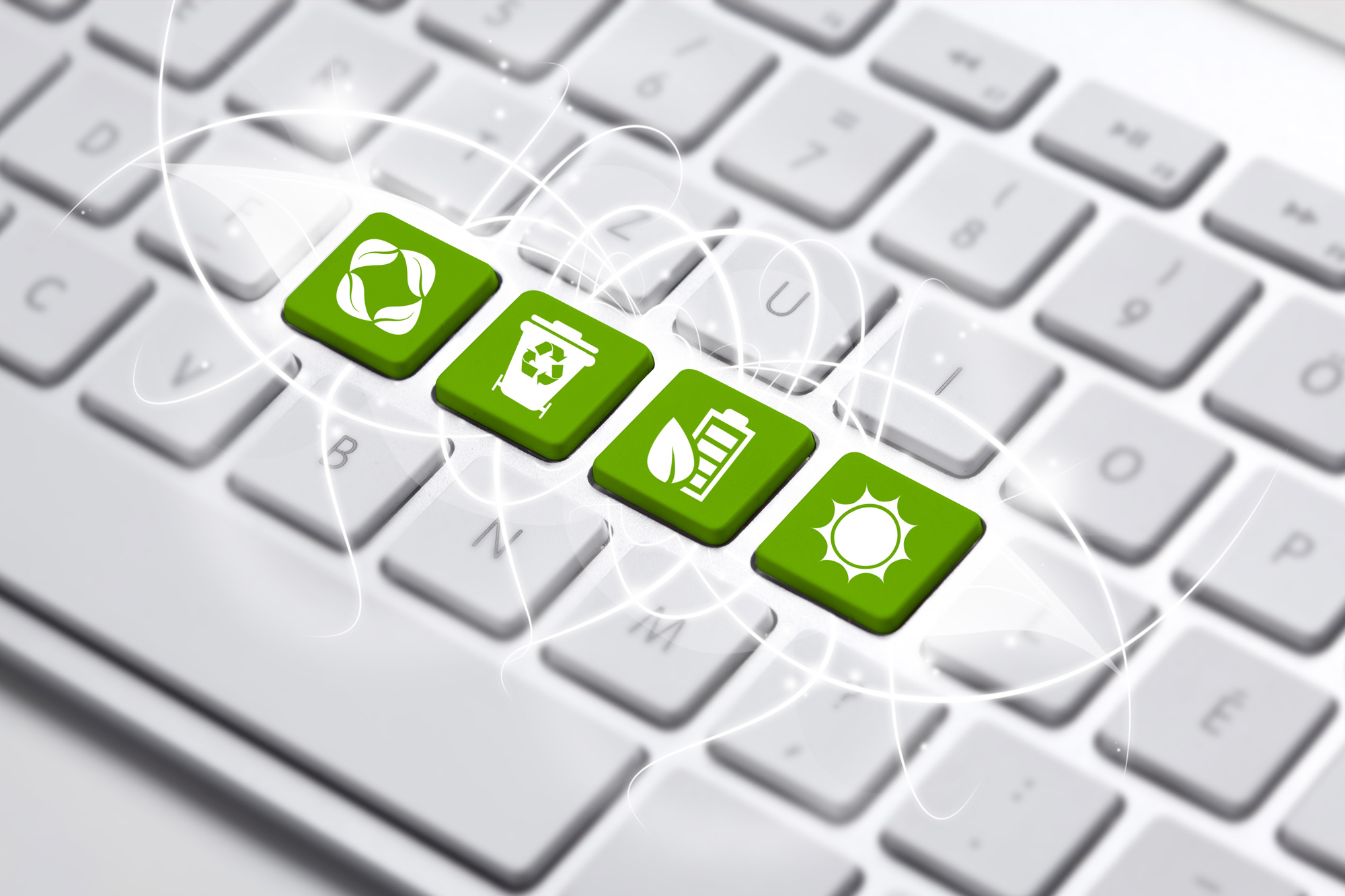Developing an eco-friendly strategy for business that is both socially and economically sustainable demonstrates progressive professional values with ethical long term objectives.
Sustainable strategies, facilitate durability and brand longevity and are a necessity in today's competitive markets. Millennial and Gen Z'ers are applying growing pressure on businesses to promote the uptake of non-polluting, sustainable practices. It is not enough to just recycle and go vegan. Switching from fossil fuels, aiming for zero waste, encouraging home working to reduce emissions and making the switch to go paperless are just some of the strategies that work towards eco-friendly success. Recently there has been a rise in businesses investing in ISO as a strategy for obtaining sustainability. In this article, we explore how and why.
Which ISO's focus on sustainability?
Developing an array of proprietary, industrial, and commercial standards, ISO has also conceptualised holistic requirements for a management system for sustainable development in communities.
These are as follows:
ISO 14001 Environmental Management System
ISO 50001 Energy Management Standard
Defined as 'meeting the needs of the present without compromising the ability of future generations to meet theirs', sustainability is characterised by three primary pillars: economic, environmental, and social, subcategorised further into people, planet and profits.
The three pillars of sustainability, as outlined through ISO, are as follows:
-
Economic – ISO standards facilitate the construction of more robust ethical professional practices whilst advancing national trading and elevating the country's national quality framework.
-
Social – ISO global standards reinforce the health and well-being of employees and brands which positively impact social welfare and civil interaction.
-
Environmental – ISO promotes ecological awareness and ethical accountability, encouraging brands to take more responsibility for their emissions and waste. Environmental sustainability requires processes that include an environmental management system capable of monitoring and controlling greenhouse gas emissions thereby facilitating eco-cons
cious energy consumption.
What is my business's carbon footprint and how do we become more actively eco friendly?
Every product or service has an input and an output, both of which leave an imprint on our planet. Being aware of and responsible for consumption and prioritising sustainable fuels over polluting alternatives are a fundamental step in the path towards achieving environmental awareness. It's so easy to ignore statistics that signpost the damage we are doing to our planet through cheap manufacturing, fast fashion, damaging emissions and more. If you want to clean up your brand's carbon footprint, there are various ways to go greener. A green audit is a great way to systematically review the positive and negative aspects of how your company uses materials, handles waste and sources sustainable products.
What components are scrutinised in a Green Audit?
A Green Audit is a systematic review involving identification, quantification, recording, reporting and analysis of processes of environmental sustainability attached to a specific business. This type of audit is designed to analyse the direct environmental impact a company has, both internally and externally.
-
Adapting to climate change – Climate change is very much the issue of the moment. Suppose your brand is not closely monitoring elements of its production that contribute to increases in temperature or extreme weather/floods, all of which are symptoms of the impact of pollution. In such a case, an action plan must be introduced to combat the negative environmental impact your production processes have.
-
Air Quality – When fossil fuels are burnt to generate electricity, harmful carbon dioxide levels are introduced into our environment. The greenhouse effect comes about as a consequence of carbon dioxide and other greenhouse gases being emitted into the atmosphere and containing heat generated by the sun, not allowing it to be dispersed. This is why the means we have for generating our electricity must be regulated, monitored and controlled and aligned with a brand's production process. Solar, wind, geothermal, and hydro are all alternative forms of sustainable power capable of reducing household or professional carbon footprints which we must embrace and migrate towards without delay.
-
Biodiversity – An ecosystem becomes more sustainable through having a high level of biodiversity. Therefore the biodiversity of an ecosystem enhances its sustainability. An ongoing systematic review of a brand's current biodiversity status indicates the elements of manufacturing that are unsustainable and which harm the environment. These negative impacts need to be deconstructed and understood to establish if more eco-friendly alternatives can be adopted.
-
Landscape – We have inherited the earth from generations before us and will pass it on to those who will come after us. We have a full repairing lease on it. It is our responsibility is to preserve this planet in as natural a state as possible. Working with the landscapes and preserving natural environments demonstrates respect for the earth and the role it plays in supporting our existence. Ensure employees respect not only the working environment but also the natural environment, nurturin
g spaces for wildlife to inhabit, from bird boxes to hedgehog patches. Other life forms were here before us and our aim should be to do no harm to their worlds. -
Noise and nuisance – Did you know that if the company is emitting loud noises, mother animals can be scared away from their young, sometimes causing them to desert them. Noise pollution has an unquestionable significant environmental impact, causing serious damage to wildlife through interrupting breeding cycles and rearing practices. Insulating windows is one positive strategy for protecting the environment and polycarbonate secondary glazing reduces noise pollution by up to 48%.
-
Waste management – From the collection, transport, treatment and disposal of waste, together with monitoring and regulation of the waste management process, effective waste management is an essential element of environmental protection. Using recyclable materials which do not pollute the atmosphere, soil or water systems is a conscientious environmentally friendly approach to waste management.
-
Water management – understanding the impact of rainfall and watercourses that your business has an impact on and which may, in turn, affect you is an important element of being a responsible business. Ask yourself if your activities impact negatively on the environment in terms of pollution, leaching water from isn’t natural course and depleting water reserves.
All of these components are integral to assessing what works and what doesn't with regard to your green plan. Continually refining and analysing the strengths and weaknesses of your brand's processes will enable you to be entirely transparent about your attitude towards ecological sustainability with consumers and investors. Relying on management systems such as ISO 14001 can help you prioritise these findings as you review your environmental aspect.
What are the ISO 14001 Requirements for Environmental Aspects?
An 'environmental aspect' is defined as any component of a business which impacts the planet and atmosphere. Once these aspects are established the ISO 14001 can be referred to as the blueprint needed to correlate Eco-friendly activities involved directly with your brand. When deciding upon your environmental aspects, the ISO 14001 specifications require consideration of the following:
-
Air emissions
-
Land pollution
-
Discharge of water
-
Use of materials / natural resources
-
Use of energy
-
The energy emitted (heat, radiation, vibration (noise), light)
-
Use of space
- Generation of waste
How can you use ISO 14001 implementation to contribute to sustainability?
ISO 14001 certification requires a current company audit to assess if all required sustainable principles are being met. ISO 14001 evaluates the output of a company and the positive and negative implications of waste and energy and a company's ability to care for our next generations. ISO 14001 standards facilitate better awareness of prolonging material life cycles through consumption and waste management. For those who read this and who feel inspired to help preserve our planet, then learn more about ISO 14001. Get in touch with us today!














 Getting ISO certified in your industry is becoming more and more critical as the competitive landscape tightens. Maintaining an advantage over your competitors is crucial to not only surviving but to prosper in these economic times.
Getting ISO certified in your industry is becoming more and more critical as the competitive landscape tightens. Maintaining an advantage over your competitors is crucial to not only surviving but to prosper in these economic times.